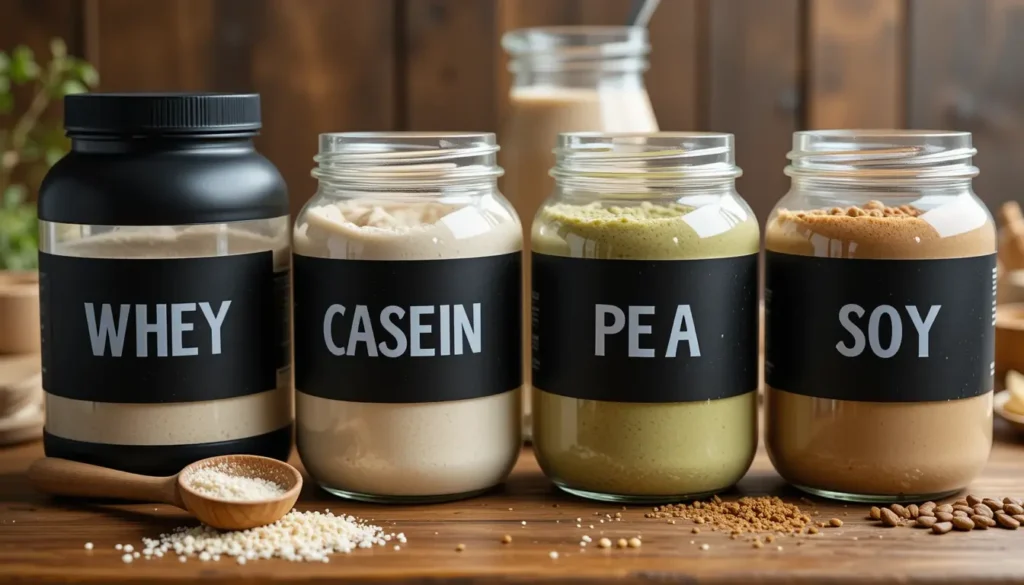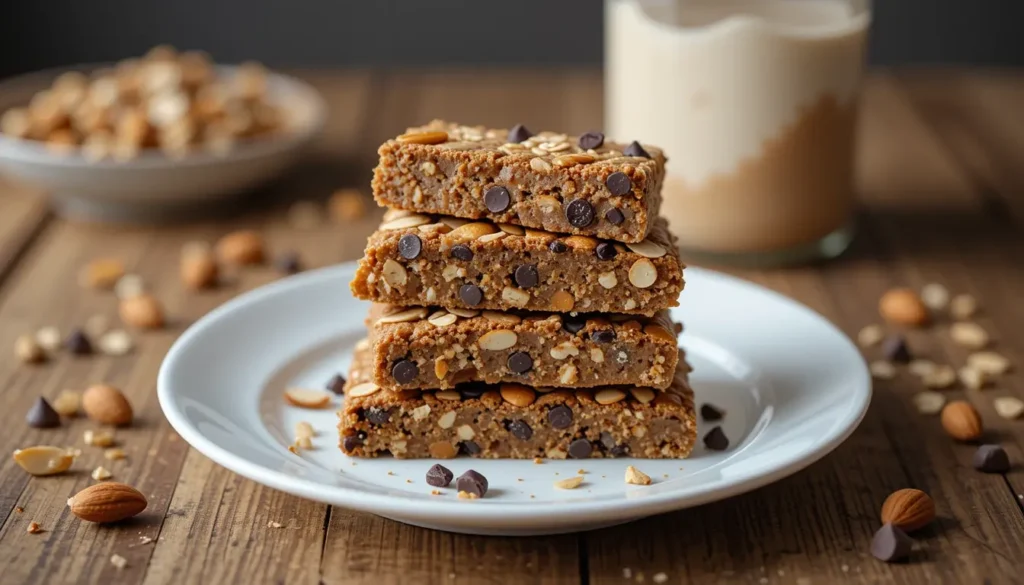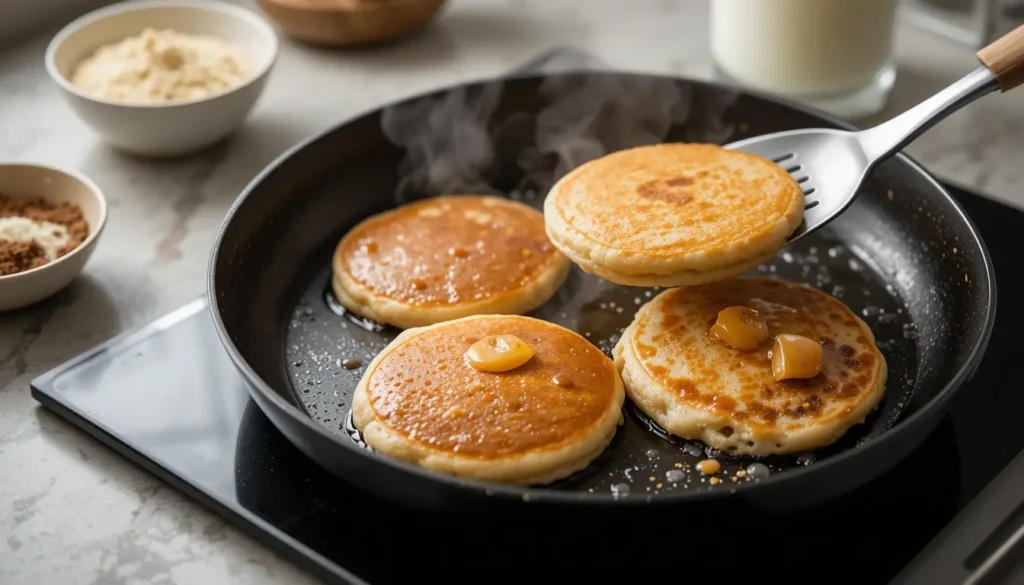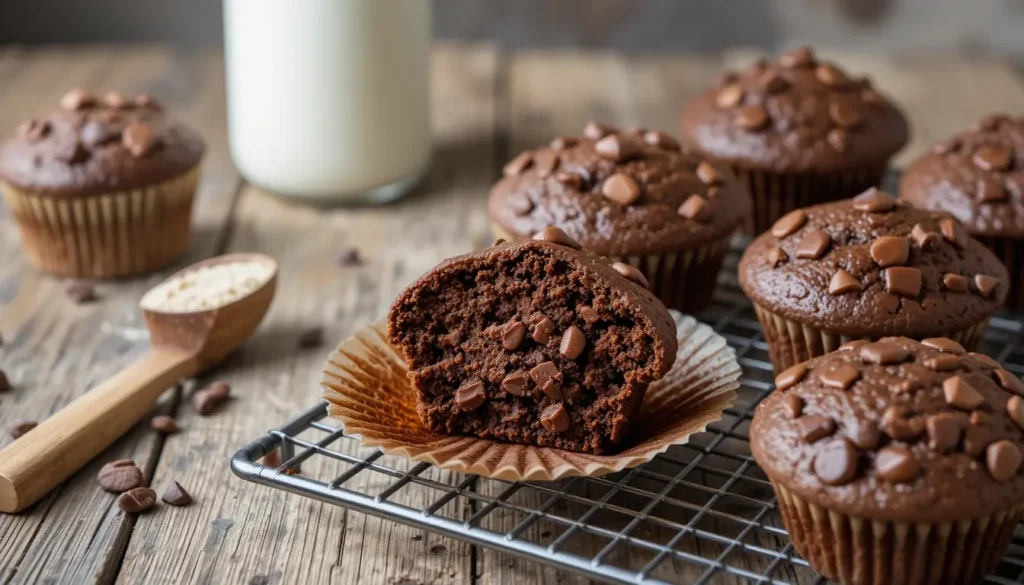Protein powder has become a popular addition to many people’s diets, particularly for those looking to enhance their protein intake without the need for complex meal prep. Whether you’re an athlete aiming to recover post-workout, or someone trying to boost protein for overall health, protein powder is often an easy and effective solution. But what about baking with it? Can you add protein powder to baked goods without compromising its nutritional benefits?
This article will explore creative ways to use protein in baking, the effects of heat on protein powder, and how to bake with it effectively. Whether you’re making protein-packed cookies, muffins, or pancakes, we’ll provide you with insights into the best practices, benefits, and possible risks of incorporating protein powder into your favorite baked recipes.
Table of Contents
Understanding Protein Powder and Its Types
Before we dive into baking with protein powder, let’s first understand what protein powder is, and how different types affect your food when baked.
What is Protein Powder?
Protein powder is a supplement made by extracting protein from animal or plant-based foods. It is commonly used to meet the body’s protein requirements, especially for individuals who have higher needs such as athletes, bodybuilders, and people on restricted diets.
The powder comes in a variety of protein types, each with its own unique properties. Some types dissolve easily in liquids, while others work better in baking. Understanding these differences is key when deciding which protein powder to use in baked goods.
Types of Protein Powder: Whey, Casein, Plant-Based, and More

Protein powder comes in several types, each offering unique benefits depending on your needs. Here are some of the most common ones:
- Whey Protein
This is one of the most popular protein powders, especially among athletes. Whey protein is derived from milk and digests quickly. It has a smooth texture, making it great for smoothies and some baked goods. However, it may not always work well in every recipe, especially those that require a longer baking time. - Casein Protein
Another protein derived from milk, casein digests more slowly than whey protein. It forms a thicker texture, which may not be ideal for all baked goods but can work well for recipes like pancakes, muffins, and certain bars. - Plant-Based Proteins (e.g., Pea, Hemp, Brown Rice)
These are excellent options for vegans or those with lactose intolerance. They may not have the same smooth texture as whey protein but can still be incorporated into baking with good results. Keep in mind that they may sometimes have a more earthy taste, which could affect the flavor of your baked goods. - Egg White Protein
Derived from the whites of eggs, this type of protein is low in fat and carbohydrates and can easily be incorporated into baking, providing structure and fluffiness to baked goods.
Understanding these protein types helps you choose the best protein powder for your recipe. Each type has its unique properties and textures, which may impact the final outcome of your baked goods.
What Happens When You Bake Protein Powder into Food?
Now that we know what protein powder is and the different types, let’s take a closer look at what happens when you bake with it.
The Effect of Heat on Protein Structure
When protein powder is exposed to heat, it undergoes a process called denaturation. Denaturation occurs when the protein molecules unfold and lose their natural structure due to heat. While this sounds alarming, it is important to note that denaturation doesn’t make the protein useless; it simply alters its structure.
For instance, denatured proteins may no longer have the same solubility or may lose their ability to bind moisture. However, the protein remains biologically active and can still provide the essential amino acids your body needs.
Does Protein Powder Lose Nutritional Value When Heated?
One of the main concerns when baking with protein powder is whether it loses its nutritional value. The good news is that while heat alters the protein’s structure, it doesn’t destroy its nutritional content. Denaturation doesn’t break down the amino acids in protein or reduce its overall protein content.
However, overbaking or exposing the protein to excessive heat for long periods of time can potentially cause some degradation in the quality of the protein. For example, if you’re baking a recipe at high temperatures for too long, you may notice that the texture becomes dry or tough. But in moderation, baking with protein powder doesn’t cause any significant loss in protein content.
Impact on Digestibility
Baking protein powder into food might also affect how easily the body digests it. Protein powder that has been denatured may take a little longer to break down in the digestive system, but this doesn’t make it less effective. It still provides essential amino acids that aid in muscle recovery, tissue repair, and general body function.
However, protein powders with additives, fillers, or artificial sweeteners may alter their digestibility, especially if consumed in excess. It’s important to check the ingredient list when choosing a protein powder for baking.
Benefits of Baking with Protein Powder

Baking with protein powder offers a range of benefits, especially for those looking to boost their protein intake without relying solely on protein shakes or bars.
Added Protein to Your Favorite Recipes
Incorporating protein powder into baked goods is an easy way to enhance the protein content of foods you already love. Adding protein powder to cookies, muffins, or pancakes helps increase your intake of this essential macronutrient. This can be particularly helpful for those with higher protein needs, such as athletes, vegetarians, or older adults.
Easy Way to Increase Protein Intake for Athletes and Active Lifestyles
For athletes or those leading active lifestyles, ensuring adequate protein intake is crucial for muscle repair and growth. Baking protein powder into your meals is an excellent way to meet these needs without adding extra calories or having to consume large amounts of meat or protein shakes.
Customizable and Versatile for Different Recipes
Protein powder is highly versatile. It can be added to a variety of baked goods like cookies, brownies, cakes, muffins, pancakes, or energy bars. Plus, it can be customized to suit your dietary preferences—whether you’re looking for vegan protein powder or a lactose-free option, there’s a protein powder for every diet.
Common Mistakes to Avoid When Baking with Protein Powder
While baking with protein powder is a great way to increase your protein intake, it’s easy to make a few mistakes that can affect the texture, taste, or nutritional value of your baked goods. Here are some common pitfalls to avoid:
Using Too Much Protein Powder
It’s tempting to add extra protein powder to a recipe, but adding too much can result in dense, dry, or overly crumbly baked goods. It’s important to follow a recipe’s instructions and use the correct amount of protein powder to maintain the proper texture.
Not Adjusting the Liquid Content of Recipes
Protein powder absorbs liquid, so when you add it to your recipe, it may require more liquid than usual. If you don’t adjust the liquid content, your baked goods could turn out dry or overly thick. Be sure to increase the liquid (such as milk, water, or juice) to balance out the added protein powder.
Not Choosing the Right Type of Protein Powder
Not all protein powders are created equal. Some are designed to be added to drinks, while others are formulated to work in baked goods. For instance, whey protein is often a good option for baking due to its smooth texture, while plant-based proteins might require additional binding agents to achieve the desired consistency.
Best Practices for Baking with Protein Powder
If you’re interested in baking with protein powder, here are some best practices to ensure your baked goods turn out perfectly.
How to Incorporate Protein Powder in Baking
To incorporate protein powder into your baked goods, start by replacing a small portion of the flour in the recipe with protein powder. A common recommendation is to substitute up to 1/4 of the flour with protein powder, especially if you’re using whey protein. This helps keep the texture light and fluffy while still adding the protein boost.
Recommended Protein Powder-to-Other Ingredients Ratio
When baking with protein powder, it’s essential to get the right ratio of protein powder to other ingredients. A general guideline is to use around 1/4 to 1/3 cup of protein powder for every 1 cup of flour. This ensures the texture of the final product remains balanced.
Popular Baked Goods That Work Well with Protein Powder
There are several baked goods that work particularly well with protein powder, such as:
- Protein Pancakes: Great for breakfast or post-workout fuel.
- Protein Cookies: A quick and delicious snack.
- Protein Muffins: Perfect for a grab-and-go meal.
- Protein Bars: A homemade energy bar that’s easy to pack for on-the-go meals.
Creative and Tasty Ways to Use Protein Powder in Baking
Now that you understand the health benefits of using protein powder in your baked goods, it’s time to get creative with how you use it! Protein powder isn’t just for smoothies or shakes—it can be incorporated into a wide variety of baked goods, from savory snacks to sweet desserts. Let’s explore some creative and tasty ways to use protein powder in your baking.
Protein-Packed Pancakes

Pancakes are a breakfast favorite, but they’re often low in protein and high in refined carbs. By adding protein powder to your pancake mix, you can easily boost the protein content and turn them into a more filling and nutritious meal. Here’s how to make protein pancakes:
- Ingredients:
- 1 scoop of your favorite protein powder (whey or plant-based)
- 1 cup of whole wheat or oat flour
- 1 egg
- 1/2 cup of milk (dairy or plant-based)
- 1/4 teaspoon of baking powder
- A pinch of salt
- 1 teaspoon of vanilla extract
- Optional: 1/4 cup of mashed bananas or berries for added sweetness and flavor
- Instructions:
- In a bowl, whisk together the dry ingredients: protein powder, flour, baking powder, and salt.
- In another bowl, whisk together the wet ingredients: egg, milk, and vanilla extract.
- Combine the wet and dry ingredients, stirring gently until just combined. If the batter is too thick, add a little more milk.
- Heat a non-stick skillet over medium heat and lightly grease with oil or butter.
- Pour the batter onto the skillet and cook until bubbles form on the surface, then flip and cook until golden brown.
- Serve with your favorite toppings, like maple syrup, yogurt, or fresh fruit.
These protein pancakes are a great way to start the day on a high note, providing sustained energy and a good balance of protein and carbs.
Protein-Packed Cookies
Who doesn’t love a delicious cookie? With the right adjustments, you can make your cookies much more nutritious without compromising on taste. Protein powder is an excellent addition to cookie recipes, adding protein and a chewy texture. Here’s a simple recipe for protein cookies:
- Ingredients:
- 1 cup almond flour or oat flour
- 1 scoop protein powder (chocolate or vanilla works well)
- 1/4 cup peanut butter or almond butter
- 1/4 cup honey or maple syrup
- 1 egg
- 1 teaspoon vanilla extract
- 1/2 teaspoon baking soda
- 1/4 cup dark chocolate chips (optional)
- Instructions:
- Preheat your oven to 350°F (175°C) and line a baking sheet with parchment paper.
- In a bowl, combine the almond flour, protein powder, and baking soda.
- In another bowl, whisk together the wet ingredients: peanut butter, honey, egg, and vanilla extract.
- Combine the dry and wet ingredients and mix until fully incorporated.
- Stir in the chocolate chips if using.
- Roll the dough into balls and place them on the prepared baking sheet, flattening them slightly with your hands.
- Bake for 8-10 minutes, or until the edges are golden brown.
- Allow the cookies to cool before enjoying.
These protein-packed cookies are perfect as a post-workout snack or an on-the-go treat, providing a good mix of healthy fats, protein, and a little sweetness.
Protein Muffins

Muffins are another popular baked good that can easily be turned into a protein-rich snack or breakfast option. They’re perfect for meal prep and can be customized to suit your taste preferences. Here’s how to make protein muffins:
- Ingredients:
- 1 scoop protein powder (vanilla or chocolate)
- 1 cup whole wheat flour or oat flour
- 1/4 cup honey or maple syrup
- 1/2 cup Greek yogurt or applesauce
- 2 eggs
- 1/2 teaspoon baking soda
- 1/2 teaspoon cinnamon (optional)
- 1/4 cup milk (dairy or plant-based)
- Optional: 1/4 cup dried fruit, nuts, or chocolate chips
- Instructions:
- Preheat your oven to 350°F (175°C) and grease a muffin tin or line it with paper liners.
- In a large bowl, combine the protein powder, flour, baking soda, and cinnamon.
- In another bowl, whisk together the wet ingredients: honey, yogurt, eggs, and milk.
- Add the wet ingredients to the dry ingredients and mix until just combined. If the batter is too thick, add more milk.
- Stir in any add-ins, like dried fruit, nuts, or chocolate chips.
- Divide the batter evenly among the muffin cups.
- Bake for 15-20 minutes, or until a toothpick comes out clean when inserted into the center of a muffin.
- Let the muffins cool before serving.
Protein muffins are versatile and easy to customize. They make an excellent snack or breakfast option for anyone on the go. By adding protein powder, you can enjoy the deliciousness of muffins while still getting a healthy dose of protein.
FAQ
Can you bake protein powder into bread?
Yes, you can bake protein powder into bread! Many people add protein powder to bread recipes to enhance their protein intake. However, it’s important to use the right type of protein powder and balance the liquid-to-dry ingredient ratio to ensure the bread turns out soft and moist.
Does baking with protein powder affect the taste?
Baking with protein powder can affect the taste, but this depends on the type of protein powder you use. Whey protein has a mild flavor and blends well with most baked goods, while plant-based protein powders can sometimes have an earthy or nutty taste.
Will protein powder help me gain muscle when baked into food?
Yes, protein powder can help you gain muscle when baked into food, as long as it’s part of a balanced diet and combined with regular exercise. Protein is essential for muscle growth and repair, regardless of whether it’s consumed in liquid or baked form.
Is it safe to bake protein powder for people with dietary restrictions (e.g., lactose intolerance)?
Yes, there are many protein powder options for those with dietary restrictions. If you’re lactose intolerant, look for lactose-free protein powders such as plant-based options or whey protein isolate, which has minimal lactose.
Can you use plant-based protein powder for baking?
Yes, plant-based protein powder can be used for baking, but you may need to adjust the recipe slightly to account for its texture and flavor. You might need to add more liquid or include binding agents like flaxseed to help with consistency.
Conclusion
Baking with protein powder can be a great way to boost your protein intake while still enjoying your favorite foods. By understanding how heat affects protein and following best practices, you can create tasty and nutritious baked goods without compromising on the protein content. Whether you’re baking protein-packed pancakes or cookies, the key is to use the right protein powder, balance the ingredients, and avoid common mistakes. Happy baking!
Articles that will surely interest you:
Protein Cake: A Delicious and Healthy Treat for Fitness Enthusiasts

